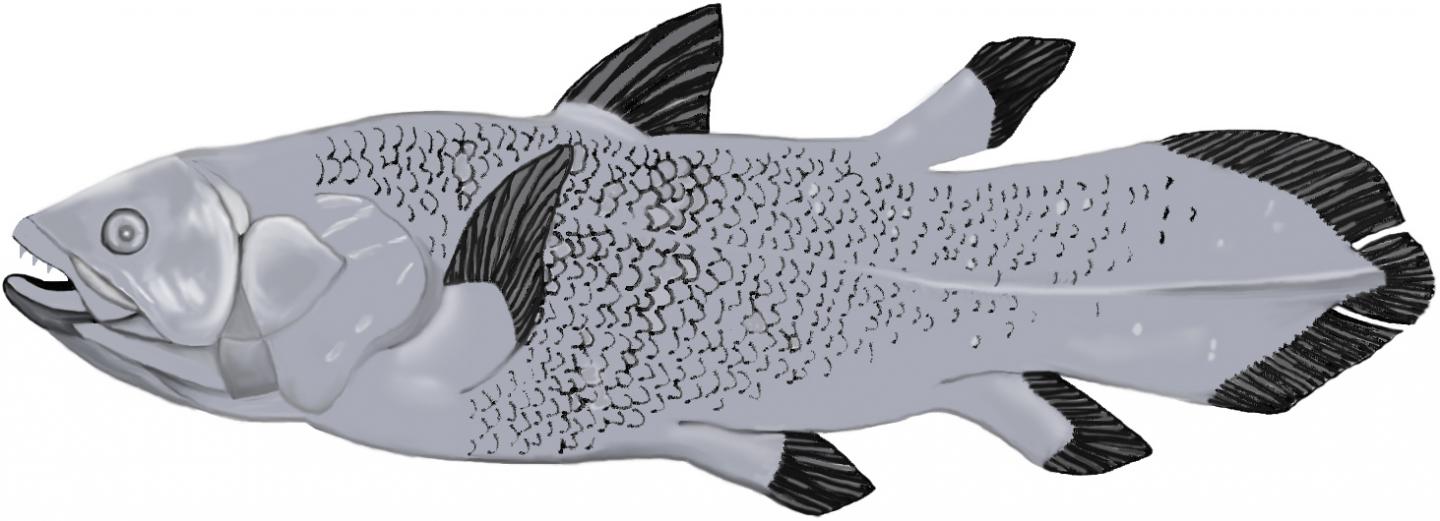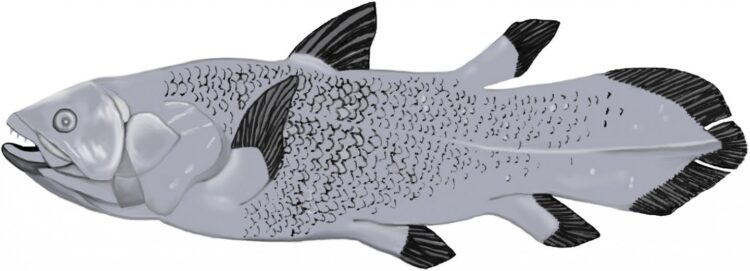From coelacanths to humans

Credit: Graphic by Sabine Bijewitz from @LeibnizLSB, Template: Drawing by former FishBase artist Robbie Cada.
To evaluate the chemical composition of food from a physiological point of view, it is important to know the functions of the receptors that interact with food ingredients. These include receptors for bitter compounds, which first evolved during evolution in bony fishes such as the coelacanth. What 400 million years of evolutionary history reveal about the function of both fish and human bitter receptors was recently published in the journal Genome Biology and Evolution by a team of researchers led by the Leibniz Institute for Food Systems Biology at the Technical University of Munich and the University of Cologne.
Evolutionarily, bitter receptors are a relatively recent invention of nature compared to other chemoreceptors, such as olfactory receptors. Their function of protecting vertebrates from consuming potentially toxic substances has long been scientifically recognized. More recent are observations that bitter receptors have other functions beyond taste perception. These include roles in defense against pathogenic bacteria, in metabolic regulation, and possibly also functions as sensors for endogenous metabolites and hormones.
Coelacanth and zebrafish in comparison
The team of scientists led by biologists Sigrun Korsching of the University of Cologne and Maik Behrens of the Leibniz Institute for Food Systems Biology now provides further evidence to support this hypothesis. In their current study, the team compared two original bitter receptor types from the coelacanth (Latimeria chalumnae) with four others from the zebrafish (Danio rerio) phylogenetically, functionally and structurally. To this end, the research team conducted, among other experiments, extensive functional studies using an established cell-based test system as well as a computer-based modeling approach. The goal was to gain a deep insight into the evolutionary history of bitter receptors in order to learn more about their functions.
As the study results show, both fish species possess, amongst others, a pair of homologous bitter receptor genes that presumably arose from a primordial gene. In this regard, the bitter recognition spectra of these fish receptors were largely identical despite 400 million years of separate evolution, according to the results of the functional studies. “What is particularly exciting about our results is that the original fish receptors recognized substances in the cellular test system which are still detected by human bitter receptors to date. These include bile acids,” says co-author Antonella Di Pizio of the Leibniz Institute.
Over 400 million years of selection pressure
“So there must have been selective pressure at least until humans evolved, that means human bitter receptors can still detect the same bitter substances as a bony fish did over 400 million years ago,” concludes taste researcher Maik Behrens. Sigrun Korsching adds, “This speaks for one or more important functions of bitter receptors, even during human evolution.”
“Coelacanths are carnivores. Therefore, one could speculate that the existence of a bitter receptor variant that mainly recognizes steroid hormones and bile acids protects against the consumption of poisonous fish, which can contain not only bile acids but also highly potent neurotoxins in their liver and gallbladder. For example, the poisonous puffer fish Arothron hispidus lives in the same waters as the coelacanth,” says Maik Behrens. “In humans and also in zebrafish, however, it is questionable whether such a receptor variant would have been preserved from an evolutionary point of view if it did not have other functions inside the body. Another argument in favor of such extraoral functions is that bitter receptors are also found on human organs such as the heart, brain or thyroid gland,” Behrens added. One goal of his research is to help understand the effects of bitter substances on a systems biological level, regardless of whether they entered the body through food or whether they belong to the body’s own substances.
###
Publication:
Behrens M, Di Pizio A, Redel U, Meyerhof W, Korsching SI (2020) Genome Biol Evol, evaa264, DOI: 10.1093/gbe/evaa264. At the root of T2R gene evolution: Recognition profiles of coelacanth and zebrafish bitter receptors
https:/
Contact:
Dr. habil. Maik Behrens
Section II, Unit Head Odor and Taste Systems Reception & Biosignals
Leibniz Institute for Food Systems Biology at the
Technical University of Munich (Leibniz-LSB@TUM)
Email: [email protected]
Dr. Antonella Di Pizio
Section III, Unit Head Molecular Modeling
Leibniz-LSB@TUM
Tel.: +49 816171 2904
Email: [email protected]
Prof. Dr. Sigrun Korsching
Institute for Genetics
Department of Biology
University of Cologne (UzK)
Email: [email protected]
Press Contact:
Dr. Gisela Olias
Knowledge transfer, Press & Public Relations
Leibniz-LSB@TUM
Tel.: +49 8161 71-2980
Email: [email protected]
http://www.
Information about the Institute
The Leibniz Institute for Food Systems Biology at the Technical University of Munich (Leibniz-LSB@TUM) has a unique research profile. Its researchers combine methods of basic biomolecular research with analytical methods of bioinformatics and analytical high-performance technologies. Their goal is to decode the complex ingredient profiles from raw materials to the final food products and to elucidate their function as biological active molecules on humans. Based on their studies, the scientists develop products, which are as healthy as they are tasty. These foods will help to provide a sustainable and sufficient stream of food for future generations. In addition, the new scientific findings will be used to develop personalized nutritional concepts that, for example, help people with food intolerance without compromising quality of life and endangering their health.
The Leibniz LSB@TUM is a member of the Leibniz Association, which connects 96 independent research institutions. Their orientation ranges from the natural sciences, engineering and environmental sciences through economics, spatial and social sciences to the humanities. Leibniz Institutes devote themselves to social, economic and ecological issues. They conduct knowledge-oriented and application-oriented research, also in the overlapping Leibniz research networks, are or maintain scientific infrastructures and offer research-based services. The Leibniz Association focuses on knowledge transfer, especially with the Leibniz Research Museums. It advises and informs politics, science, business and the public. Leibniz institutions maintain close cooperation with universities – among others, in the form of the Leibniz Science Campuses, industry and other partners in Germany and abroad. They are subject to a transparent and independent review process. Due to their national significance, the federal government and the federal states jointly fund the institutes of the Leibniz Association. The Leibniz Institutes employ around 20,000 people, including 10,000 scientists. The entire budget of all the institutes is more than 1.9 billion euros.
Media Contact
Dr. Gisela Olias
[email protected]
Original Source
https:/
Related Journal Article
http://dx.





